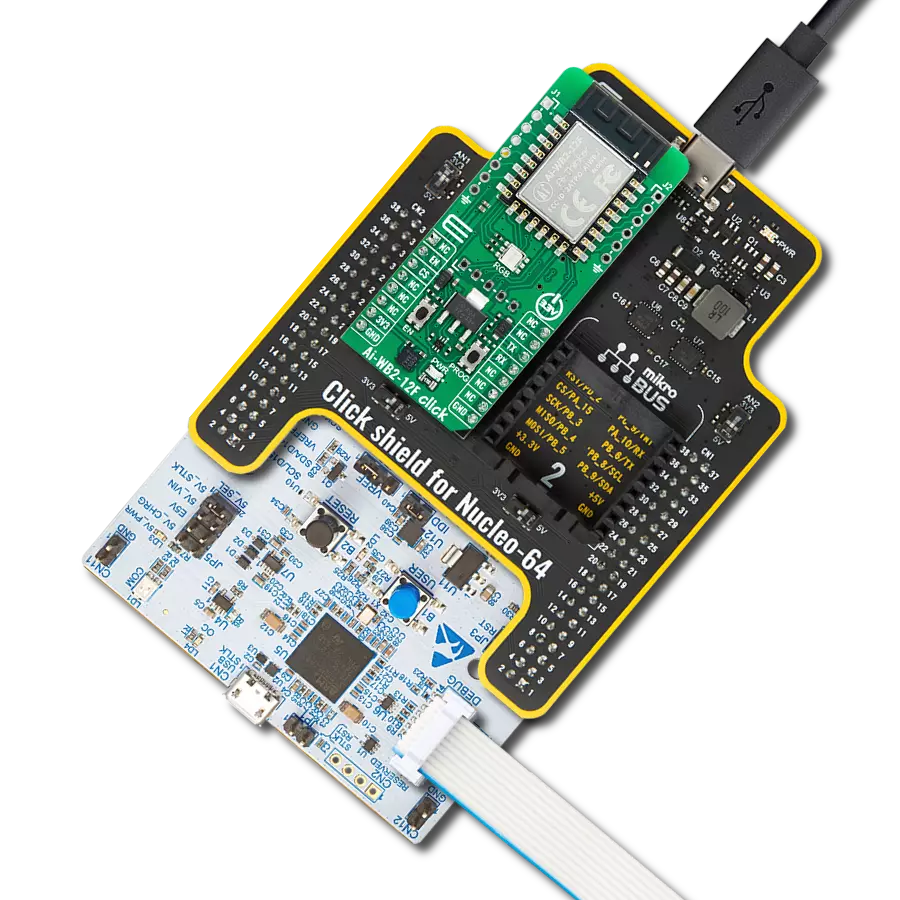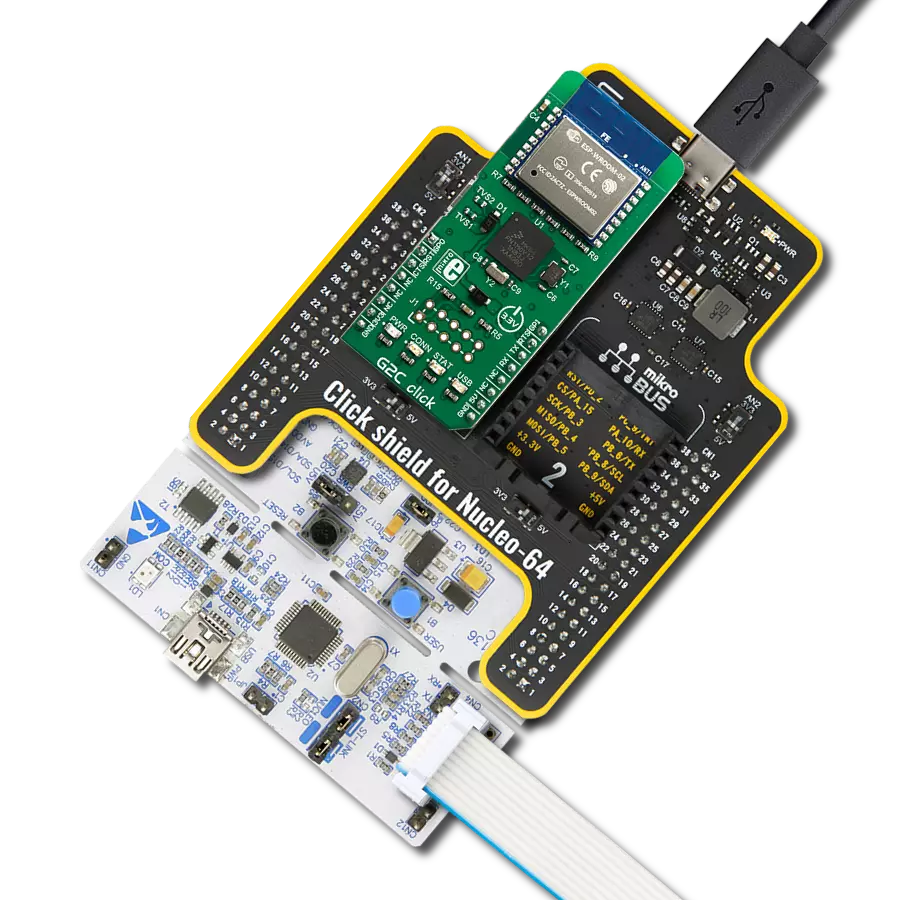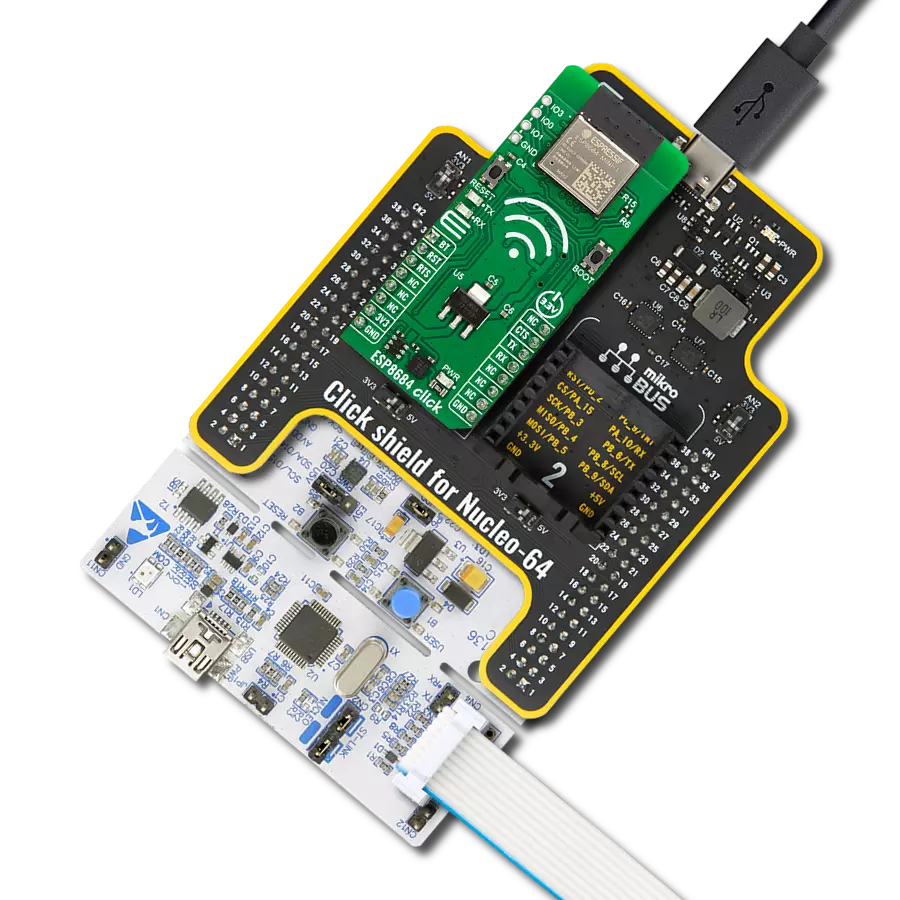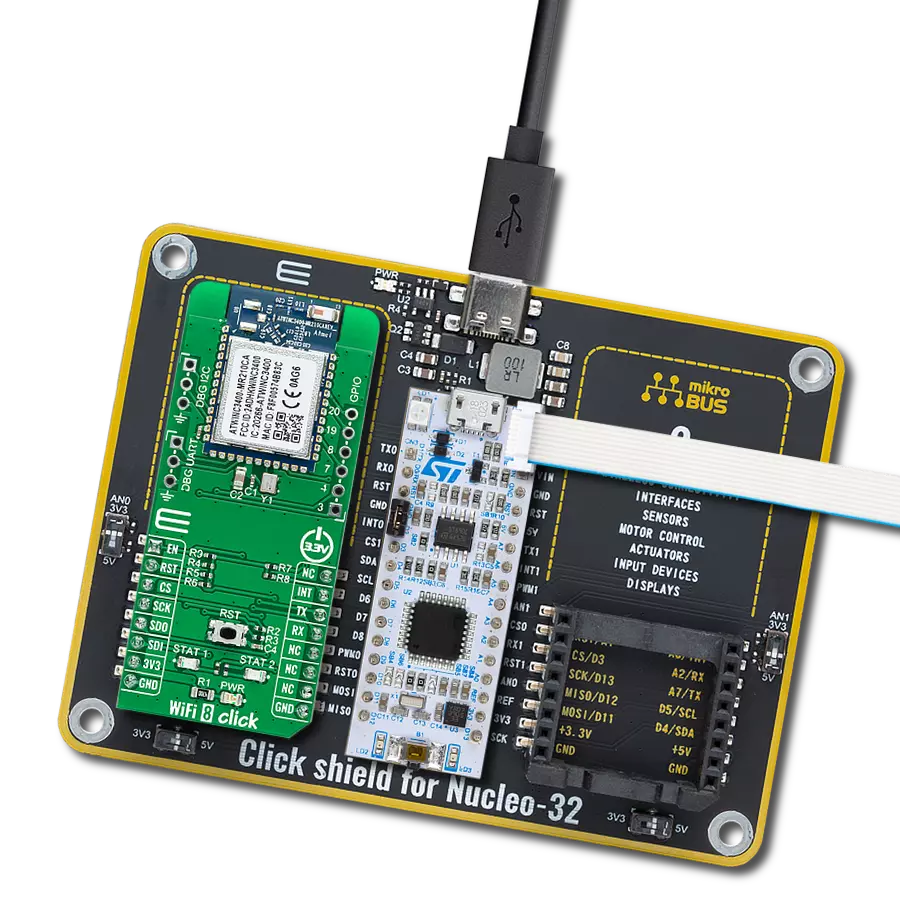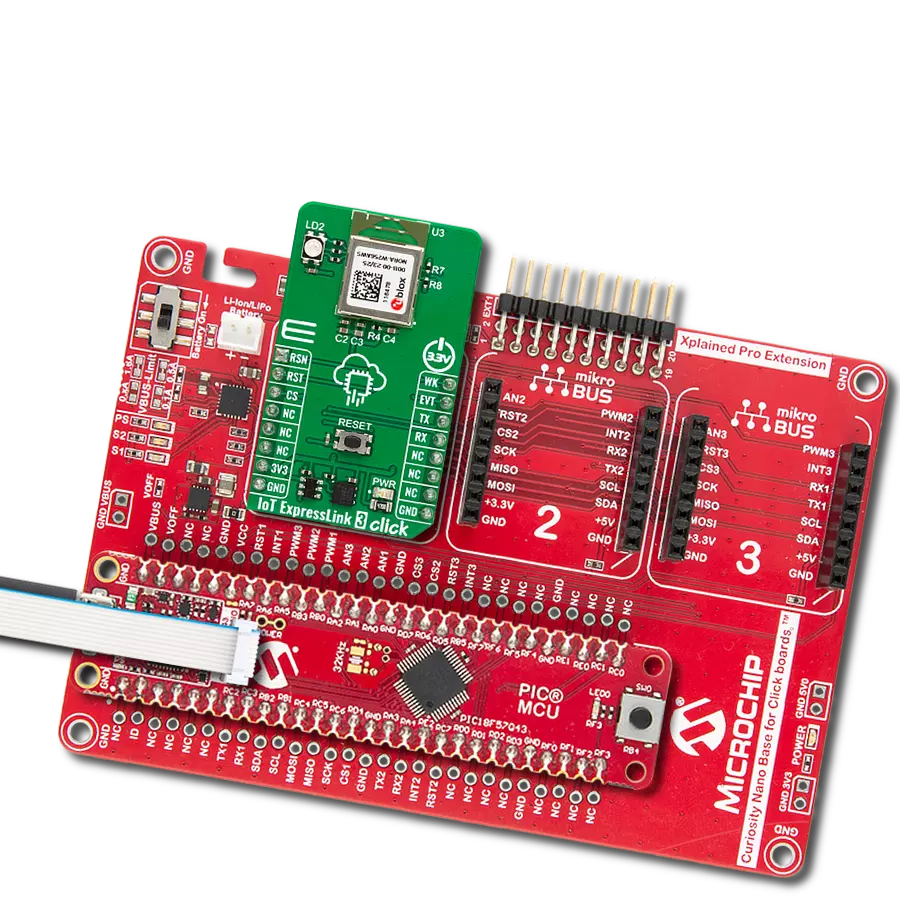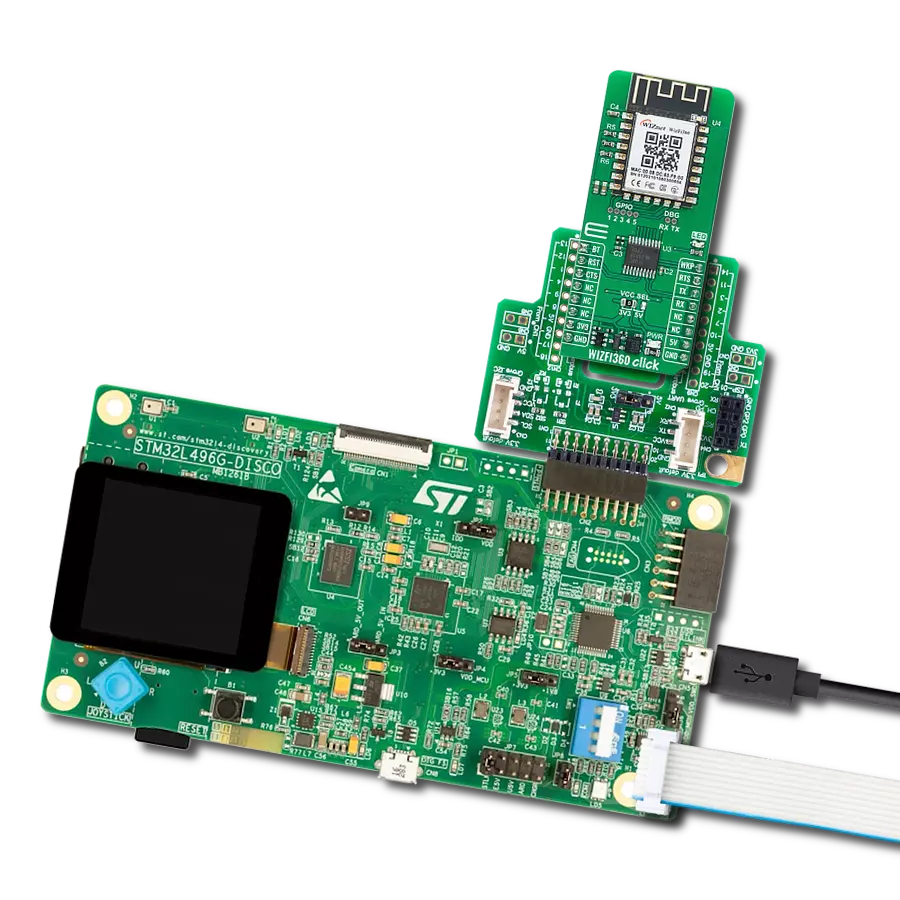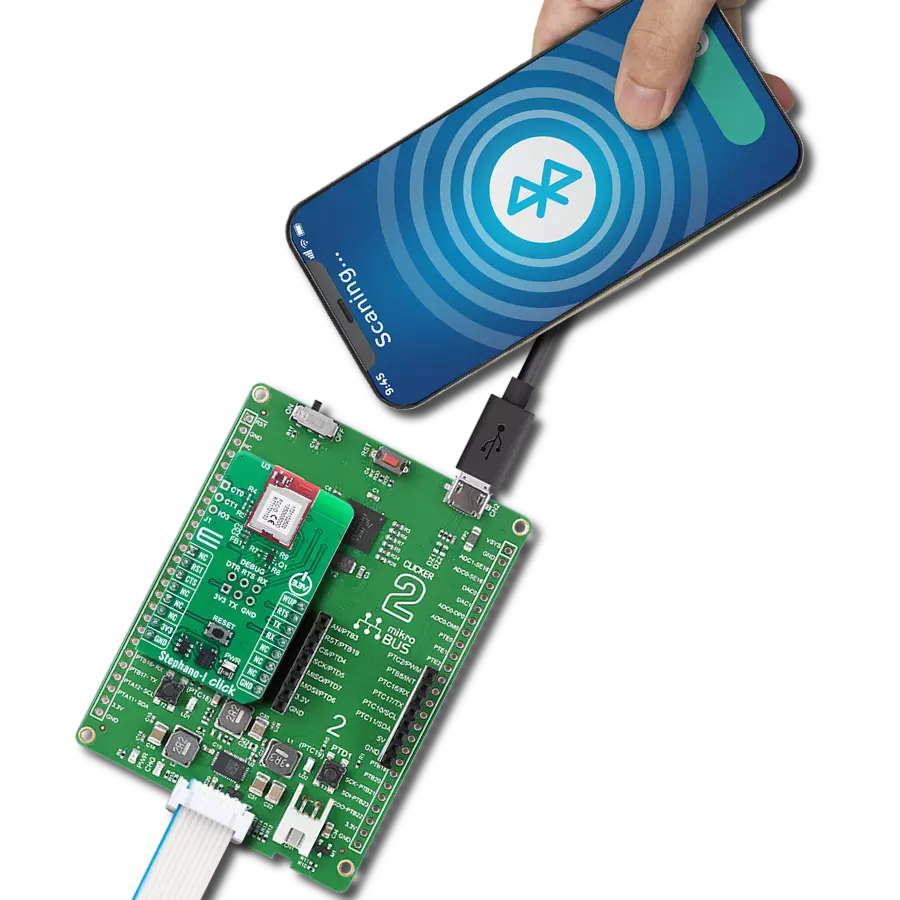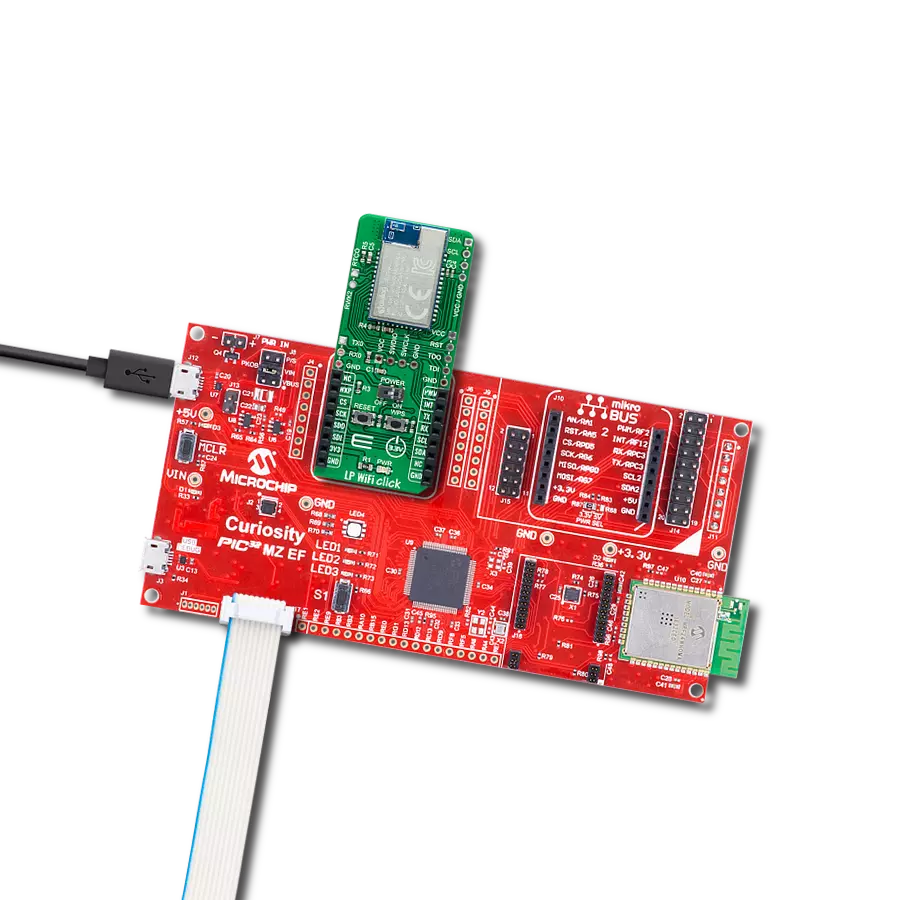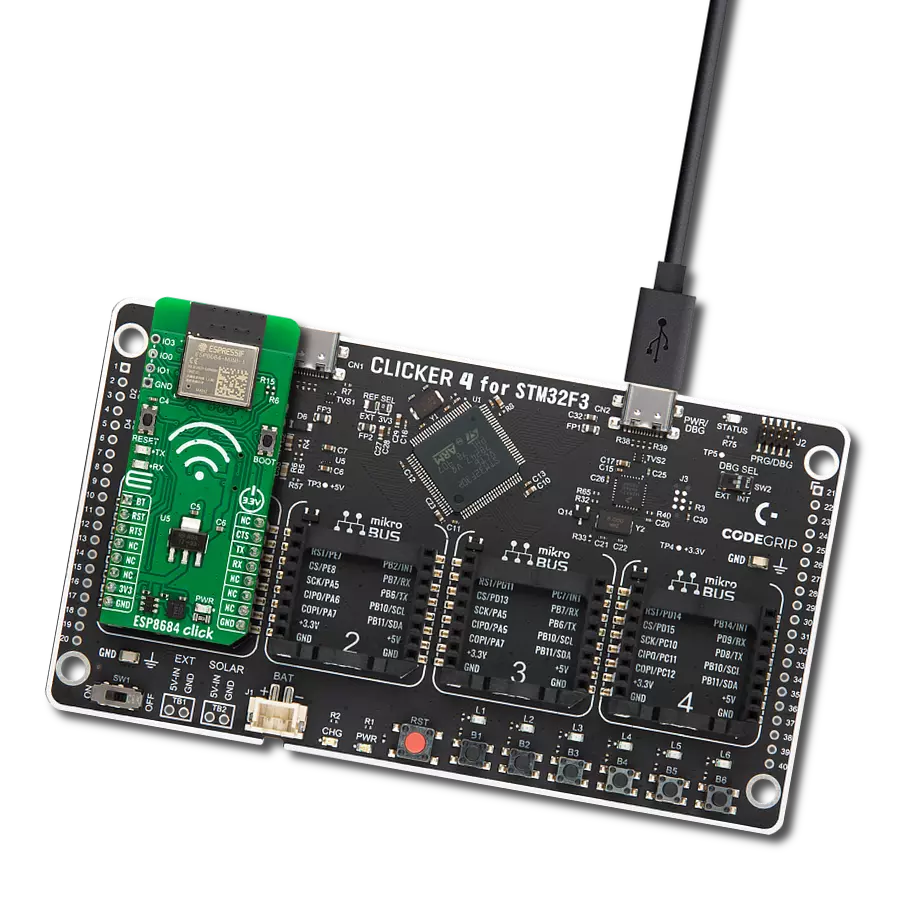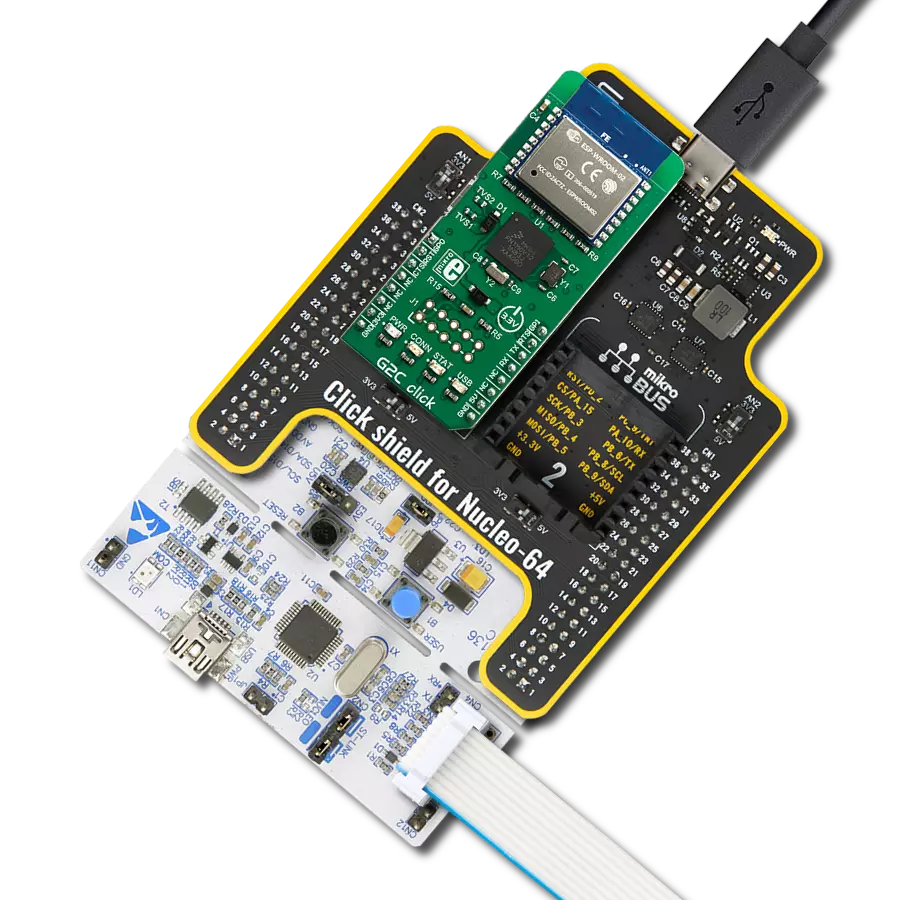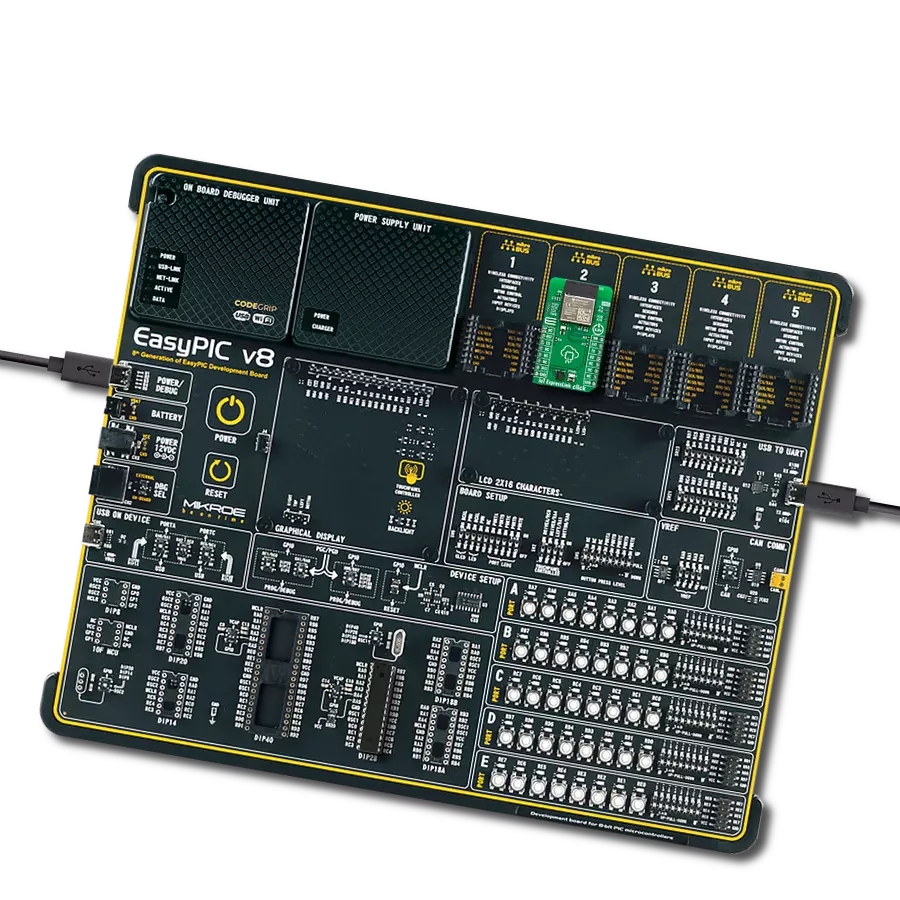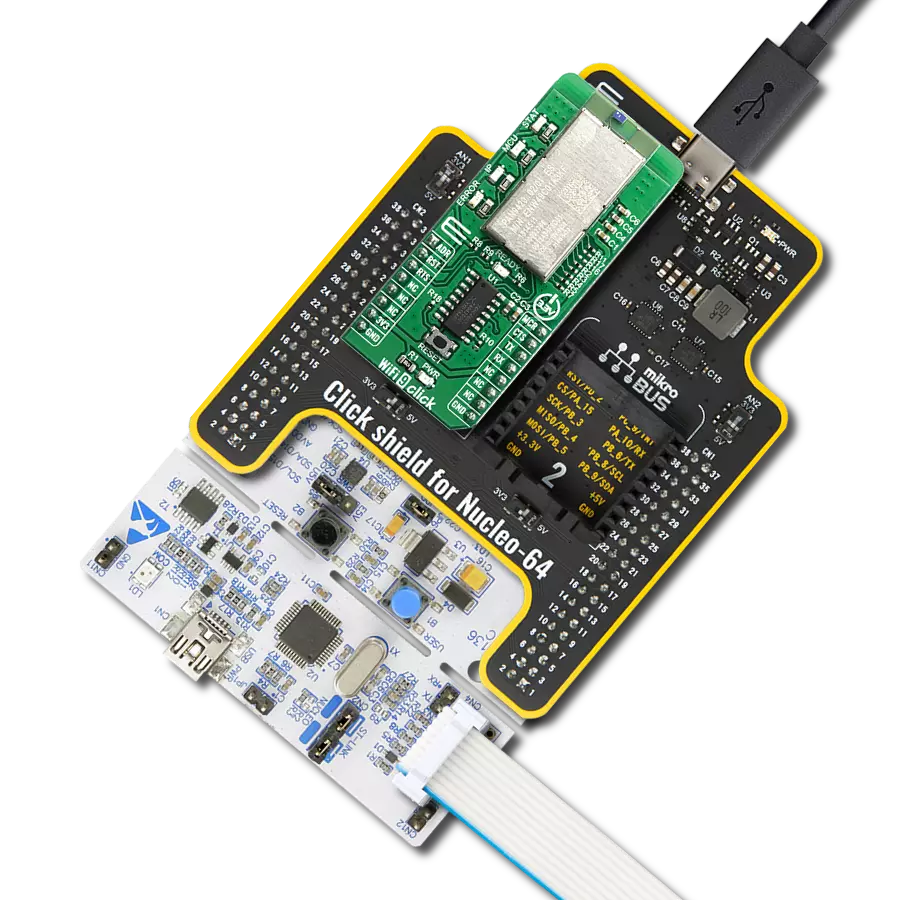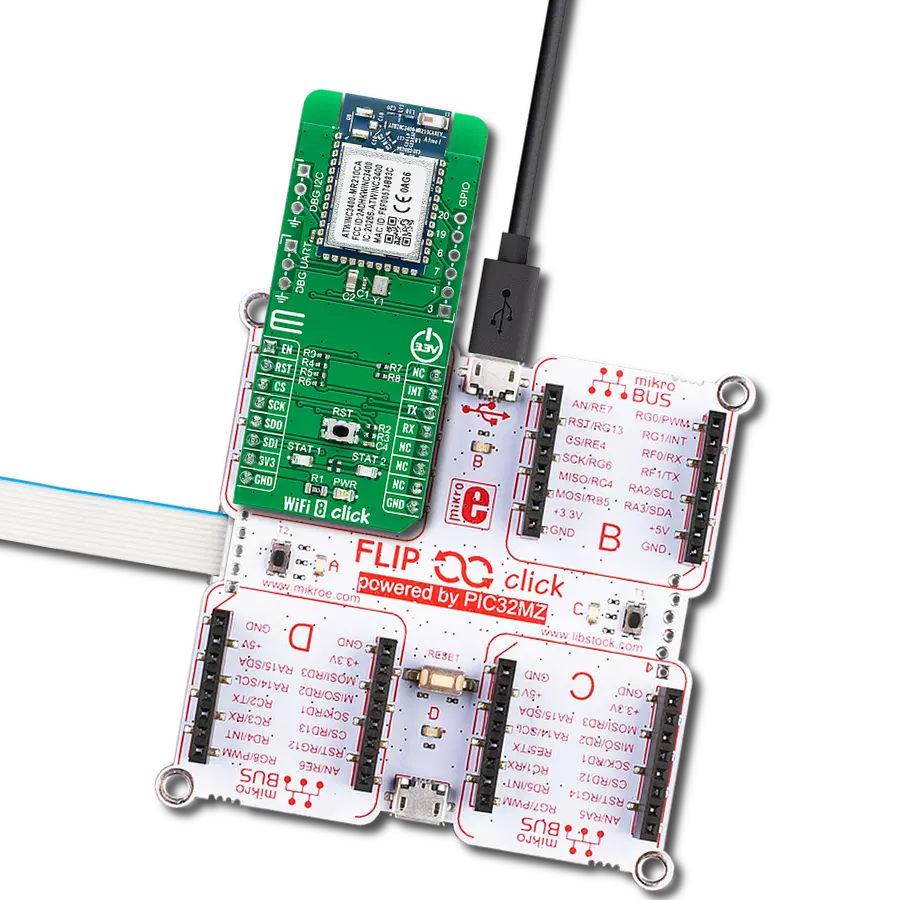Elevate your home network with our 2.4GHz WiFi solution, designed for brilliance in speed, coverage, and reliability, ensuring you stay connected effortlessly.
A
A
Hardware Overview
How does it work?
WiFi 9 Click is based on the PAN9420, a fully embedded Wi-FI module from Panasonic. The module combines a high-performance CPU, high-sensitivity wireless radio, baseband processor, medium access controller, encryption unit, boot ROM with patching capability, internal SRAM, and in-system programmable flash memory. The module’s integrated QSPI flash memory is available to the application for storing web content such as HTML pages or image data. Parallel support of access point and infrastructure mode allows easy setup of simultaneous Wi‑Fi connections from the module to smart devices and home network routers.
The pre‑programmed Wi-Fi SoC firmware enables client (STA), micro access point (µAP), and Ad‑hoc mode (Wi-Fi Direct) applications. With the transparent mode, raw data can be sent from the UART to the air interface to smart devices, web servers, or PC applications. For working with PAN9420 module at your disposal are two data UART interfaces, one for command and another for transparent data. In order to enable simultaneous communication between the module and host MCU through one UART on mikroBUS™ socket we have added 74HC4052 multiplexer from Nexperia. On the WiFi 9 click board several status LED’s are implemented
for easiest visual monitoring of the module states like MCU heartbeat, IP connectivity, Errors, WiFi connection and Booting. The PAN9420 supports Over-the-Air firmware updates. In order to make use of this feature, the customer needs to ensure that the appropriate preconditions are fulfilled and that a suitable environment is provided. This Click board™ can be operated only with a 3.3V logic voltage level. The board must perform appropriate logic voltage level conversion before using MCUs with different logic levels. Also, it comes equipped with a library containing functions and an example code that can be used as a reference for further development.
Features overview
Development board
Flip&Click PIC32MZ is a compact development board designed as a complete solution that brings the flexibility of add-on Click boards™ to your favorite microcontroller, making it a perfect starter kit for implementing your ideas. It comes with an onboard 32-bit PIC32MZ microcontroller, the PIC32MZ2048EFH100 from Microchip, four mikroBUS™ sockets for Click board™ connectivity, two USB connectors, LED indicators, buttons, debugger/programmer connectors, and two headers compatible with Arduino-UNO pinout. Thanks to innovative manufacturing technology,
it allows you to build gadgets with unique functionalities and features quickly. Each part of the Flip&Click PIC32MZ development kit contains the components necessary for the most efficient operation of the same board. In addition, there is the possibility of choosing the Flip&Click PIC32MZ programming method, using the chipKIT bootloader (Arduino-style development environment) or our USB HID bootloader using mikroC, mikroBasic, and mikroPascal for PIC32. This kit includes a clean and regulated power supply block through the USB Type-C (USB-C) connector. All communication
methods that mikroBUS™ itself supports are on this board, including the well-established mikroBUS™ socket, user-configurable buttons, and LED indicators. Flip&Click PIC32MZ development kit allows you to create a new application in minutes. Natively supported by Mikroe software tools, it covers many aspects of prototyping thanks to a considerable number of different Click boards™ (over a thousand boards), the number of which is growing every day.
Microcontroller Overview
MCU Card / MCU
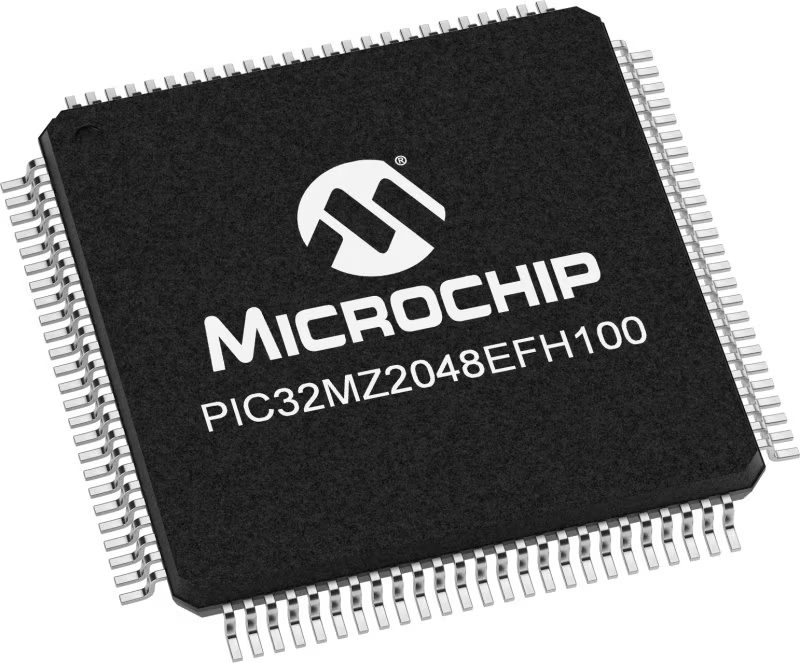
Architecture
PIC32
MCU Memory (KB)
2048
Silicon Vendor
Microchip
Pin count
100
RAM (Bytes)
524288
Used MCU Pins
mikroBUS™ mapper
Take a closer look
Click board™ Schematic

Step by step
Project assembly
Software Support
Library Description
This library contains API for WiFi 9 Click driver.
Key functions:
wifi9_select_uart- Switch to a command or binary uartwifi9_reset_device- Module reset.wifi9_send_command- Send Command function.
Open Source
Code example
The complete application code and a ready-to-use project are available through the NECTO Studio Package Manager for direct installation in the NECTO Studio. The application code can also be found on the MIKROE GitHub account.
/*!
* \file
* \brief WiFi 9 Click example
*
* # Description
* This application showcases capability of the WiFi 9 Click board.
* It initializes device, connects to local WiFi. Creates TCP server, waits for connection,
* and logs every message it receives from clients and returns back those messages as an echo response.
*
* The demo application is composed of two sections :
*
* ## Application Init
* Initializes driver and wifi communication, then connects to the desired WiFi network
* and creates TCP server on the IP address assigned to the Click board.
*
* ## Application Task
* All data received from the TCP clients will be logger to USB UART and echoed back to the clients.
*
* ## Additional Function
* - static void wifi9_clear_app_buf ( void )
* - static err_t wifi9_process ( void )
* - static void wifi9_log_app_buf ( void )
* - static err_t wifi9_rsp_check ( uint8_t *rsp )
*
* \author MikroE Team
*
*/
// ------------------------------------------------------------------- INCLUDES
#include "board.h"
#include "log.h"
#include "wifi9.h"
#include "string.h"
// Example parameters
#define EXAMPLE_SSID "MikroE Public"
#define EXAMPLE_PASSWORD "mikroe.guest"
#define EXAMPLE_SERVER_PORT "1234"
// Application buffer size
#define APP_BUFFER_SIZE 256
#define PROCESS_BUFFER_SIZE 256
// ------------------------------------------------------------------ VARIABLES
/**
* @brief Application example variables.
* @details Variables used in application example.
*/
static uint8_t app_buf[ APP_BUFFER_SIZE ] = { 0 };
static int32_t app_buf_len = 0;
static wifi9_t wifi9;
static log_t logger;
// ------------------------------------------------------- ADDITIONAL FUNCTIONS
/**
* @brief Clearing application buffer.
* @details This function clears memory of application
* buffer and reset its length.
*/
static void wifi9_clear_app_buf ( void );
/**
* @brief Data reading function.
* @details This function reads data from device and
* appends it to the application buffer.
* @return @li @c 0 - Some data is read.
* @li @c -1 - Nothing is read.
* See #err_t definition for detailed explanation.
*/
static err_t wifi9_process ( void );
/**
* @brief Logs application buffer.
* @details This function logs data from application buffer.
*/
static void wifi9_log_app_buf ( void );
/**
* @brief Response check.
* @details This function checks for response and
* returns the status of response.
* @param[in] rsp Expected response.
* @return @li @c 0 - OK response.
* @li @c -1 - Unknown error.
* @li @c -2 - Timeout error.
* See #err_t definition for detailed explanation.
*/
static err_t wifi9_rsp_check ( uint8_t *rsp );
// ------------------------------------------------------ APPLICATION FUNCTIONS
void application_init ( void )
{
log_cfg_t log_cfg;
wifi9_cfg_t cfg;
/**
* Logger initialization.
* Default baud rate: 115200
* Default log level: LOG_LEVEL_DEBUG
* @note If USB_UART_RX and USB_UART_TX
* are defined as HAL_PIN_NC, you will
* need to define them manually for log to work.
* See @b LOG_MAP_USB_UART macro definition for detailed explanation.
*/
LOG_MAP_USB_UART( log_cfg );
log_init( &logger, &log_cfg );
log_info( &logger, " Application Init " );
// Click initialization.
wifi9_cfg_setup( &cfg );
WIFI9_MAP_MIKROBUS( cfg, MIKROBUS_1 );
wifi9_init( &wifi9, &cfg );
wifi9_reset_device( &wifi9 );
wifi9_select_uart( &wifi9, WIFI9_SELECT_CMD_UART );
Delay_ms ( 1000 );
Delay_ms ( 1000 );
Delay_ms ( 1000 );
Delay_ms ( 1000 );
wifi9_process( );
wifi9_clear_app_buf( );
log_printf( &logger, "---------------------\r\n" );
log_printf( &logger, "---- System Info ----\r\n" );
log_printf( &logger, "---------------------\r\n" );
wifi9_send_command( &wifi9, WIFI9_CMD_GET_SYSTEM_FIRMWARE );
wifi9_rsp_check( WIFI9_CMD_GET_SYSTEM_FIRMWARE );
wifi9_log_app_buf( );
wifi9_send_command( &wifi9, WIFI9_CMD_GET_SYSTEM_MAC_ADDR );
wifi9_rsp_check( WIFI9_CMD_GET_SYSTEM_MAC_ADDR );
wifi9_log_app_buf( );
wifi9_send_command( &wifi9, WIFI9_CMD_GET_SYSTEM_SERIAL_NUM );
wifi9_rsp_check( WIFI9_CMD_GET_SYSTEM_SERIAL_NUM );
wifi9_log_app_buf( );
wifi9_send_command( &wifi9, WIFI9_CMD_GET_SYSTEM_RADIO_VER );
wifi9_rsp_check( WIFI9_CMD_GET_SYSTEM_RADIO_VER );
wifi9_log_app_buf( );
wifi9_send_command( &wifi9, WIFI9_CMD_GET_SYSTEM_BOOTL_VER );
wifi9_rsp_check( WIFI9_CMD_GET_SYSTEM_BOOTL_VER );
wifi9_log_app_buf( );
wifi9_send_command( &wifi9, WIFI9_CMD_GET_SYSTEM_HW_REV );
wifi9_rsp_check( WIFI9_CMD_GET_SYSTEM_HW_REV );
wifi9_log_app_buf( );
Delay_ms ( 1000 );
Delay_ms ( 1000 );
Delay_ms ( 1000 );
log_printf( &logger, "--------------------------\r\n" );
log_printf( &logger, "---- Start NETCAT app ----\r\n" );
log_printf( &logger, "--------------------------\r\n" );
log_printf( &logger, "\r\nSet Station to ON status: " );
wifi9_send_command( &wifi9, WIFI9_CMD_SET_WLAN_STATE_STA_ON );
wifi9_rsp_check( WIFI9_CMD_SET_WLAN_STATE );
wifi9_log_app_buf( );
Delay_ms ( 1000 );
Delay_ms ( 1000 );
Delay_ms ( 1000 );
log_printf( &logger, "\r\nSet Station SSID and PASSWORD: " );
strcpy( app_buf, WIFI9_CMD_SET_WLAN_CFG_STA );
strcat( app_buf, " \"" );
strcat( app_buf, EXAMPLE_SSID );
strcat( app_buf, "\" \"" );
strcat( app_buf, EXAMPLE_PASSWORD );
strcat( app_buf, "\" 4" );
wifi9_send_command( &wifi9, app_buf );
wifi9_rsp_check( WIFI9_CMD_SET_WLAN_CFG );
wifi9_log_app_buf( );
Delay_ms ( 500 );
log_printf( &logger, "\r\nTurn ON - Netcat module: " );
wifi9_send_command( &wifi9, WIFI9_CMD_SET_NETCAT_STATE_ON );
wifi9_rsp_check( WIFI9_CMD_SET_NETCAT_STATE );
wifi9_log_app_buf( );
Delay_ms ( 500 );
log_printf( &logger, "\r\nExclude Netcat authentication: " );
wifi9_send_command( &wifi9, WIFI9_CMD_SET_NETCAT_AUTH_OFF );
wifi9_rsp_check( WIFI9_CMD_SET_NETCAT_AUTH );
wifi9_log_app_buf( );
Delay_ms ( 500 );
log_printf( &logger, "\r\nSet the Netcat module server port: " );
strcpy( app_buf, WIFI9_CMD_SET_NETCAT_CFG_SERVER );
strcat( app_buf, " " );
strcat( app_buf, EXAMPLE_SERVER_PORT );
wifi9_send_command( &wifi9, app_buf );
wifi9_rsp_check( WIFI9_CMD_SET_NETCAT_CFG );
wifi9_log_app_buf( );
Delay_ms ( 1000 );
Delay_ms ( 1000 );
Delay_ms ( 1000 );
log_printf( &logger, "\r\nWaiting for an IP address assignment from DHCP server...\r\n" );
for ( ; ; )
{
log_printf( &logger, "\r\nGet IP address: " );
wifi9_send_command( &wifi9, WIFI9_CMD_GET_NET_CFG_STA );
wifi9_rsp_check( WIFI9_CMD_GET_NET_CFG );
wifi9_log_app_buf( );
if ( !strstr ( app_buf, "0.0.0.0" ) )
{
break;
}
Delay_ms ( 1000 );
Delay_ms ( 1000 );
Delay_ms ( 1000 );
Delay_ms ( 1000 );
Delay_ms ( 1000 );
}
wifi9_clear_app_buf( );
Delay_ms ( 1000 );
log_printf( &logger, "\r\nNow you can connect to the TCP server listed above via a TCP client app\r\n" );
log_printf( &logger, "The module is transferred to BIN-UART - for data collection\r\n" );
wifi9_select_uart( &wifi9, WIFI9_SELECT_BIN_UART );
log_info( &logger, " Application Task " );
Delay_ms ( 1000 );
}
void application_task ( void )
{
wifi9_process( );
if ( app_buf_len )
{
wifi9_log_app_buf( );
wifi9_generic_write( &wifi9, app_buf, app_buf_len );
wifi9_clear_app_buf( );
Delay_ms ( 100 );
}
}
int main ( void )
{
/* Do not remove this line or clock might not be set correctly. */
#ifdef PREINIT_SUPPORTED
preinit();
#endif
application_init( );
for ( ; ; )
{
application_task( );
}
return 0;
}
static void wifi9_clear_app_buf ( void )
{
memset( app_buf, 0, app_buf_len );
app_buf_len = 0;
}
static err_t wifi9_process ( void )
{
uint8_t rx_buf[ PROCESS_BUFFER_SIZE ] = { 0 };
int32_t rx_size = 0;
rx_size = wifi9_generic_read( &wifi9, rx_buf, PROCESS_BUFFER_SIZE );
if ( rx_size > 0 )
{
int32_t buf_cnt = app_buf_len;
if ( ( ( app_buf_len + rx_size ) > APP_BUFFER_SIZE ) && ( app_buf_len > 0 ) )
{
buf_cnt = APP_BUFFER_SIZE - ( ( app_buf_len + rx_size ) - APP_BUFFER_SIZE );
memmove ( app_buf, &app_buf[ APP_BUFFER_SIZE - buf_cnt ], buf_cnt );
}
for ( int32_t rx_cnt = 0; rx_cnt < rx_size; rx_cnt++ )
{
if ( rx_buf[ rx_cnt ] )
{
app_buf[ buf_cnt++ ] = rx_buf[ rx_cnt ];
if ( app_buf_len < APP_BUFFER_SIZE )
{
app_buf_len++;
}
}
}
return WIFI9_OK;
}
return WIFI9_ERROR;
}
static void wifi9_log_app_buf ( void )
{
for ( int32_t buf_cnt = 0; buf_cnt < app_buf_len; buf_cnt++ )
{
log_printf( &logger, "%c", app_buf[ buf_cnt ] );
}
}
static err_t wifi9_rsp_check ( uint8_t *rsp )
{
uint32_t timeout_cnt = 0;
uint32_t timeout = 60000;
wifi9_clear_app_buf( );
wifi9_process( );
while ( 0 == strstr( app_buf, rsp ) )
{
wifi9_process( );
if ( timeout_cnt++ > timeout )
{
wifi9_clear_app_buf( );
return WIFI9_ERROR_TIMEOUT;
}
Delay_ms ( 1 );
}
Delay_ms ( 100 );
wifi9_process( );
if ( strstr( app_buf, rsp ) )
{
return WIFI9_OK;
}
return WIFI9_ERROR;
}
// ------------------------------------------------------------------------ END
Additional Support
Resources
Category:WiFi

















